#sustainable vineyard
Text
Cowhorn Supper Club
Cowhorn Vineyard and Garden, Applegate Valley’s Demeter-certified Biodynamic vineyard and farm, announces the launch of its Supper Club.
Highly Curated Experience to Feature Cowhorn Wines Paired with Culinary Creations from Cowhorn’s Chef Tim Payne
Cowhorn Vineyard and Garden, Applegate Valley’s Demeter-certified Biodynamic vineyard and farm, announces the launch of its Supper Club. The unique experience will showcase a refined selection of Cowhorn’s wines thoughtfully paired with elevated dishes featuring farm-fresh ingredients…
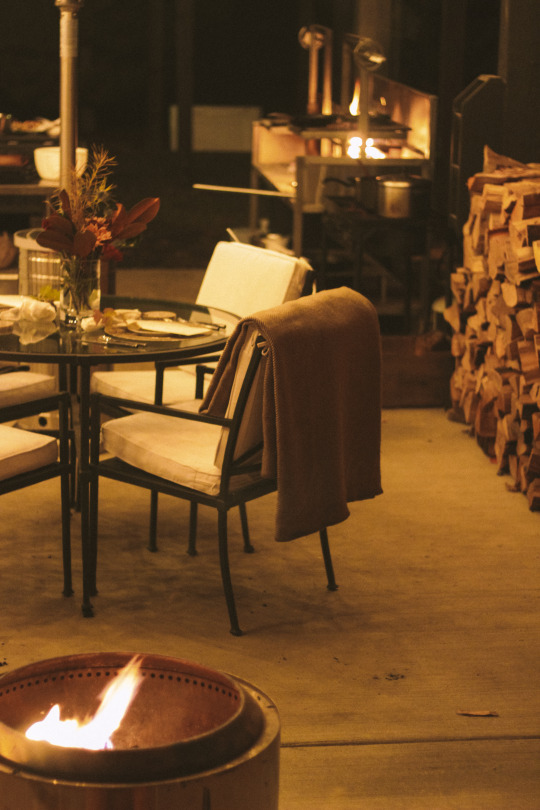
View On WordPress
#biodynamic wine#Chef tim Payne#Cowhorn supper club#Cowhorn Vineyard#Cowhorn vineyard and gardens#curated experiences#supper clubs#sustainable vineyard#Tim Payne#woman owned vineyard
0 notes
Text
5 Tips for Winery Renovations: Boost Your Vineyard’s Success
Introduction to Winery Renovations
Why Renovate?
Winery renovations are a great way to keep your vineyard fresh and appealing. Renovations can attract more visitors, make wine production smoother, and even boost your sales. Whether you want to update old equipment, redesign your tasting room, or make your winery more eco-friendly, renovating can bring new life to your business.
Planning Your…
#case studies winery renovations#DIY winery projects#energy efficient winery#guided tours winery#improving winery workflow#legal considerations winery renovation#marketing renovated winery#modern winery equipment#outdoor winery spaces#special events winery#sustainable winery practices#tasting room redesign#vineyard renovation tips#wine production improvements#winery budget planning#winery makeover#winery renovation timeline#winery renovations#winery structural upgrades#winery visitor experience
0 notes
Text
Wine Woman Whisky Whisperer
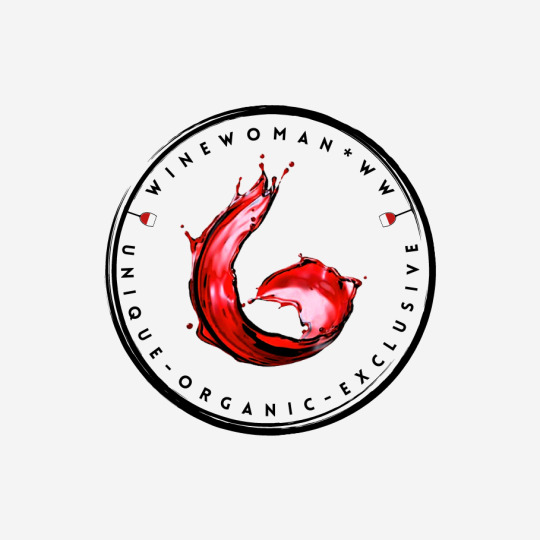
Website: https://www.winewomanww.com
Wine Woman Whisky Whisperer specializes in importing exclusive, organic European wines and Japanese whisky. With a focus on eco-friendly and sustainable practices, they offer a unique collection of wines and spirits, alongside private label wines for wholesale. Their services extend to private tastings, degustation events, and hospitality training, emphasizing their commitment to quality and environmental sustainability.
Facebook: https://www.facebook.com/Winewomanww
Instagram: https://www.instagram.com/winewomanwhiskywhisperer/
Keywords:
Japanese distilleries
Hospitality industry training
Wine tasting events
Degustation experience
Australian wine market
Biodynamic wines online
Sustainable wineries
Australian wine market trends
Biodynamic wines for sale
Eco-friendly spirits
European vineyards
Organic wine sales
Private label wine services
Sustainable winemaking practices
Wine event management
Wine event planning
eco friendly spirits
european wine importers
japanese whisky retailers
wholesale wine distribution
sustainable liquor practices
unique wine collection
quality spirits import
wine and whisky expertise
whisky tasting sessions
organic wine varieties
biodynamic wine options
sustainable spirit choices
eco conscious winemaking
imported european wines
authentic japanese whisky
custom label wine services
bulk wine distribution
engaging wine tastings
exquisite degustation experiences
training for hospitality professionals
sustainability in liquor production
rare and unique wine finds
premium spirits imports
wine and whisky connoisseurship
old world charm of european vineyards
japanese artistry in distilleries
wine event coordination
whisky tasting workshops
certified organic wine sales
environmentally friendly spirits
sustainable practices in winemaking
exclusive european wine imports
sought after japanese whiskies
custom branded wine options
wine distribution for businesses
interactive wine tastings
fine degustation experiences
professional training for hospitality
sustainability initiatives in liquor
collectible and unique wines
importing high quality spirits
expertise in wine and whisky
australian wine market insights
exploring european vineyard landscapes
japanese craftsmanship in distilling
whisky tasting masterclasses
organic wine sales online
biodynamic wine selections
eco friendly spirit choices
premier european wine imports
rare japanese whisky finds
private label wine customization
wholesale wine distribution services
exclusive wine tasting experiences
degustation events for enthusiasts
advanced hospitality industry training
liquor sustainability education
limited edition and unique wines
premium imported spirits
wine and whisky aficionado expertise
australian wine market developments
european vineyard terroir
japanese whisky distillation art
wine event coordination services
whisky tasting seminars
certified organic wine selections
biodynamic wines with character
eco conscious spirit offerings
sustainability in artisanal winemaking
european wine import insights
japanese whisky culture appreciation
custom label wine services for businesses
wine distribution partnerships
immersive wine tasting experiences
degustation events for connoisseurs
#Japanese distilleries#Hospitality industry training#Wine tasting events#Degustation experience#Australian wine market#Biodynamic wines online#Sustainable wineries#Australian wine market trends#Biodynamic wines for sale#Eco-friendly spirits#European vineyards#Organic wine sales#Private label wine services#Sustainable winemaking practices#Wine event management#Wine event planning#eco friendly spirits#european wine importers#japanese whisky retailers#wholesale wine distribution#sustainable liquor practices#unique wine collection#quality spirits import#wine and whisky expertise#whisky tasting sessions#organic wine varieties#biodynamic wine options#sustainable spirit choices#eco conscious winemaking#imported european wines
1 note
·
View note
Photo

Deck in Boston
Large trendy rooftop rooftop deck photo with no cover
#massachusetts#sustainability#glass panel railing#charles rose architects#martha's vineyard#photovoltaic panels
0 notes
Text
i think i should've been born as a second son to some high standing noble lord in medieval times (not having the responsibility to be an heir but still enjoy the lavishness yk). or maybe i should've been a nepo baby.
#gaining knowledge for pleasure not because it is absolutely necessary for my survival#enjoy italian summers and napa vineyards while delving into concepts of quantum science for 'fun'#having more than enough money to sustain myself throughout my life#yeah
0 notes
Text
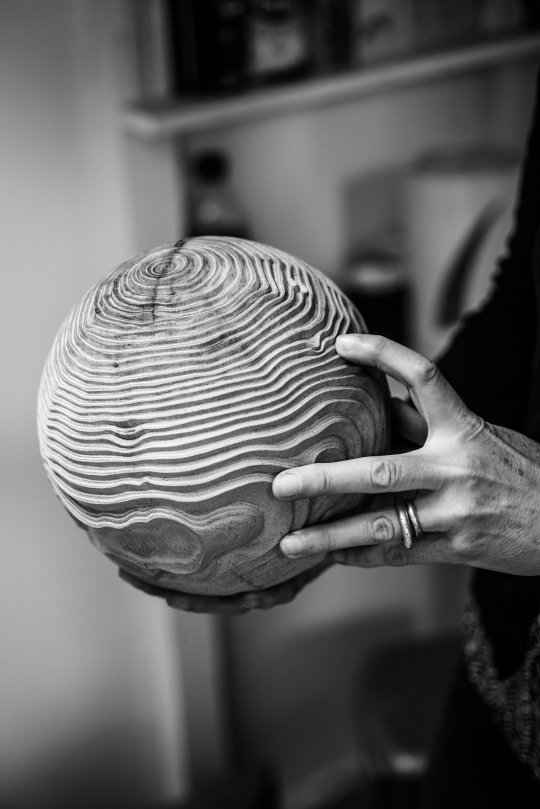



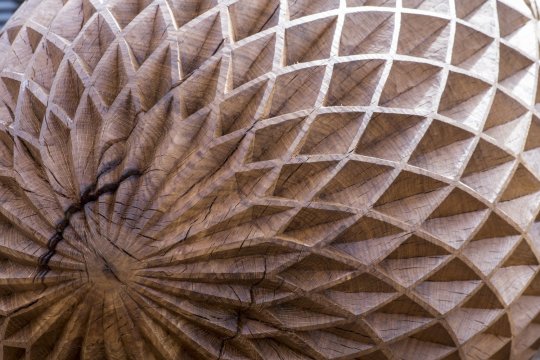

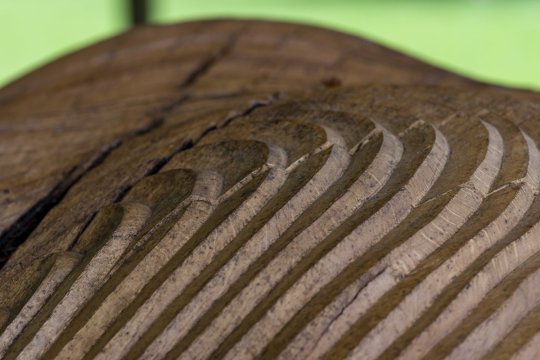
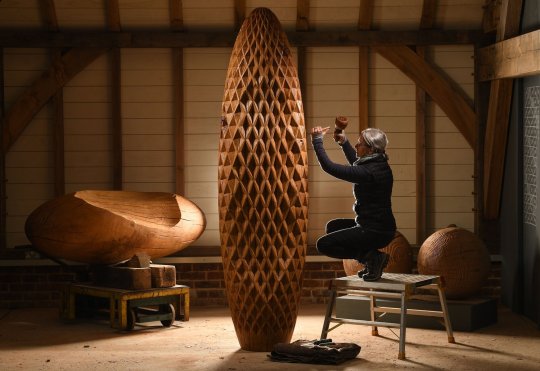
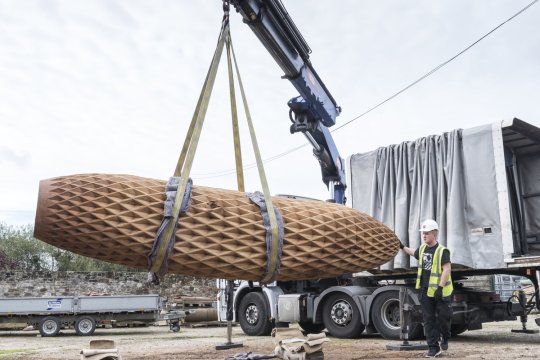

Born in Keighley, West Yorkshire in 1965, Alison Crowther is a sculptor and furniture maker working exclusively with English Oak. Having first studied 3D design at Buckinghamshire College and then Furniture design at the Royal College of Art, her first notable commission were the pews she created for the Prior Silkstede Chapel at Winchester Cathedral (1996) followed by Lover’s Seat at Chatsworth in 1999. Over the last twenty years, she has produced significant, site-specific works for international, corporate clients such as Swire Properties in Hong Kong: the Sheraton Hotel at Ghuangzhou, China; and the Shangri-La Hotel’s iconic Ting restaurant at The Shard in London. She has also undertaken many private commissions throughout Europe and the USA, including Martha’s Vineyard and Nantucket Island.
The way Crowther observes and responds to her material, taking cues from the density, grain and growth pattern creates what Madeleine Bunting described as a ‘dialogue between material and human intervention'. Using tools that range from chainsaws to chisels, she produces work that is sometimes domestic in scale and functional in use, such as Glyndebourne Kissing Benches and sometimes monumental, as with Scale Tree I, created for One Shenzhen Bay. All her work is painstakingly hand-carved from great trunks of unseasoned oak, taken from responsibly managed woodlands within the South Downs National Park. Guided by the natural characteristics of the wood - often embracing the gnarly surface texture - her forms are true to the organic nature of the oak, while also complementing the environments in which they are to be ultimately used and displayed. The wood itself is on a continuous process of change and refinement as the timber ages and weathers, adding to its beauty and character.
70 notes
·
View notes
Photo

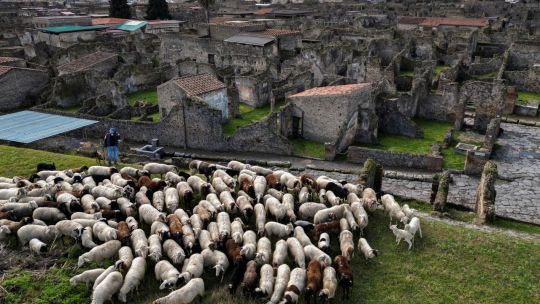



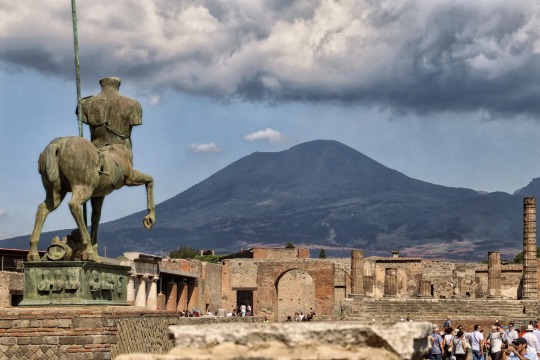

Sheep Help Archaeologists Preserve Ancient Ruins at Pompeii
A flock of grazing sheep is helping archaeologists to preserve the ancient ruins of Pompeii, the Roman city that was buried under meters of pumice and ash in the calamitous eruption of Mount Vesuvius in AD 79.
Archaeologists have uncovered only around two thirds of the 66-hectare (163 acres) site at Pompeii since excavations began 250 years ago.
Preserving the unexplored sections of the ancient city against erosion by nature and time is a priority for those who manage the site.
“If grass and other plants grow in or on the ancient walls and houses this is a problem. So we try to have a sustainable approach to the whole environment in order also to avoid using substances then to avoid growing plants, having plants growing on the walls and ruins,” said Gabriel Zuchtriegel, the director of the Pompeii Archaeological Park.
The flock of 150 sheep has been deployed to Regio V, a northern section of the city, where grassy hills are dotted with the ruined remains of ancient houses and shops.
Regio V is still off limits to the millions of visitors who come to Pompeii each year, but as part of its conservation efforts the archaeology park has in recent years launched new excavations at the site.
Among the striking discoveries since 2018 were vibrant frescoes, a snack shop and the skeletal remains of people killed in the eruption.
Zuchtriegel said the sheep initiative does not contribute to efforts of reducing carbon emissions, but helps to save money and preserve the landscape.
“It’s also something which really gives an idea of how Pompeii was in the time when it was rediscovered. It was woods, vineyards, sheep and it was this kind of rural environment and in the midst of that you had Pompeii.”
#Pompeii#Sheep Help Archaeologists Preserve Ancient Ruins at Pompeii#Mount Vesuvius#archeology#archeolgst#ancient artifacts#history#history news#ancient history#ancient culture#ancient civilizations#roman empire#roman history
960 notes
·
View notes
Text






MOREAU
Just classic romance. They're not as in love as my other sims, but they're both horse lovers and they occasionally get the want to kiss, so that's enough to sustain a marriage... I hope.
Just two trust fund babies coasting on their barely breaking even businesses. However, Claire's wine thing is taking off. She's made $20,000+ total with it, and just hit level 8. It just takes so much time.
I might hire nectar services (mod that pretty much calls people to work on your vineyard for you) to give her a helping hand.
#sims 3#the sims 3 gameplay#sims 3 screenshots#sims 3 gameplay#ts3 gameplay#the sims 3#rotational households#ts3#sims3#thesims3
31 notes
·
View notes
Text
Potting up the Autumn veggies
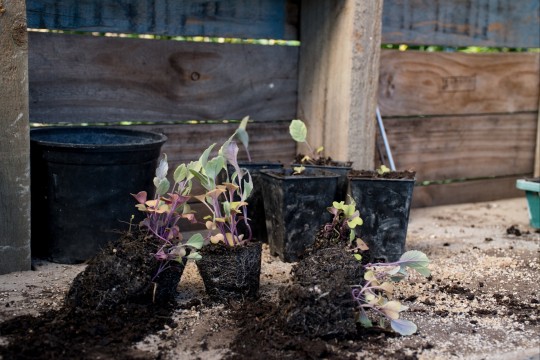
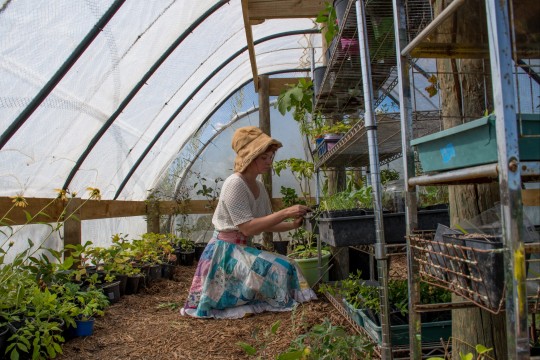
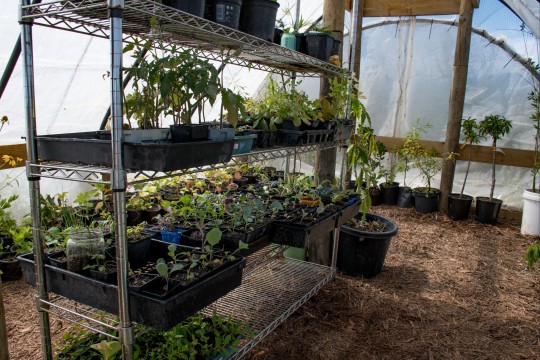
I spent most of 2023 feeling beind. I had so much to do and no money or energy to get the more physically demanding jobs done. I'm setting my expectations low and slow for 2024, spreading out my tasks so I can hopefully tick more of them off.
I'm starting by getting my Autumn garden organised and marking the calendar for when to start the next round for winter. I thrive with routines and schedules so I'm really trying to set myself up for success this year.
Did my post about this tunnel house me made out of rubbish ever post? It's polypiping we found in the forest, old vineyard nighting, tunnel plastic tossed out from a tomato farm, old fence posts, zip ties, and a few boards of new timber for supports. The shelves are from the recycling centre and my pots are also 2nd hand. My plants are mostly grown from seeds or cuttings with a handful of exceptions I've absorbed as gifts or through swaps. I'm so proud of this wee grow house!
Also I've seen a lot of vibes i dont really vibe with in the homesteading community. I'm almost feeling like maybe solarpunk would be a more fitting tag? Living with nature and utilising new technologies that are more sustainable, focusing on reducing, reusing, and repurposing and supporting my community instead of prepping for me and mine in the end times? Idk. Thoughts?
48 notes
·
View notes
Text


Biden’s ironically named Inflation Reduction Act (IRA) was supposed to create millions of green jobs and launch the “sustainable power” industry.
Subsidies flowed to support electric vehicles, wind farms, and solar energy. We have been covering the slowdown in the EV market, and residents of the East Coast are questioning all the promises made by the wind energy companies after the Vineyard Wind blade failure.
Now, it’s time to turn our attention to solar power. SunPower, the company that provides solar panels to many Californian homes in the sunny Coachella Valley area, filed for bankruptcy this week.
It is the latest development in a saga that has seen the company facing numerous serious and seemingly escalating challenges over the past several months, including allegations about executives’ misconduct related to the company’s financial statements and a recent decision that SunPower would no longer offer new solar leases.
Days after the latter announcement, Coachella Valley-based Renova Energy, which markets and installs SunPower systems, said it was ending its partnership with SunPower and temporarily pausing operations after not receiving required payments from SunPower.
SunPower’s executive chairman wrote in a letter posted on the company’s website on Monday that the company had reached an agreement to sell certain divisions of its business and suggested it was looking for one or more buyers to take on the rest, including the company’s responsibilities to maintain solar systems it has previously sold or leased.
It is important to note that SunPower was the industry’s “darling” to understand the magnitude of this development.
Founded in 1985 by a Stanford professor, SunPower was, for the past two decades, a darling of the solar industry. The company helped build America’s biggest solar plant, called Solar Star and located near Rosamond, California, and has installed solar panels on more than 100,000 homes.
The company’s stock price has fluctuated dramatically, peaking during the solar stock frenzy of late 2007. As recently as January 2021, SunPower’s valuation momentarily reached $10 billion, buoyed by the expansion of its residential solar panels program.
But since then, the company’s value has cratered — and this year, its situation became particularly dire.
It is also important to note that earlier this month, the bankruptcy of a solar-powered company in South Florida created an array of problems on the South Coast of California. Subcontractors are scrambling to find ways to guarantee payment for work on homes with equipment from the firm.
Meanwhile, homeowners are regretting their misplaced trust in eco-activists and city officials.
The business — Electriq Power Inc. — was putting solar panels and batteries on Santa Barbara rooftops at no expense to homeowners and with the blessings of the cities of Santa Barbara, Goleta, and Carpinteria. But then Electriq filed Chapter 7 on May 3, freezing all its operations.
This prompted one of its subcontractors, Axiom 360 of Grover Beach, to place mechanics liens on homes for which it had yet to be paid. This preserves Axiom’s options for full payment of its installation work and is not unusual among contractors. But for homeowners who didn’t expect any financial outlay, it came as a shock, especially as the recording notice lists foreclosure in 90 days among the penalties.
“You’re helping the environment. You’re not paying high rates to Southern California Edison,” said homeowner Randy Freed, explaining why he signed on to Electriq’s PoweredUp Goleta program. He was pleased with the savings in the solar array and storage batteries, but then he received the mechanics lien in June. The possibility of foreclosure was unanticipated, Freed said, and he’d relied on the cities’ endorsements. “It’s a great program; we’ve checked them out,” he recalled the cities saying on a postcard he received.
Hot Air's Beege Welborne takes an in-depth look at the cascade of warnings that indicate SunPower and the residential solar market are in serious trouble. She also hits on a point that is true for all green energy schemes: Today’s technology cannot keep up with the promises being made about tomorrow.
The technology side still hasn’t ironed itself out and may never with as saturated as the market is. With interest rates as high as they are and home prices through the roof, no one wants to pay a fortune for something that’s not rock solid.
…That “sustainable” growth is only possible once all the artificial supports are knocked away and the technology proves viable and worth the cost once and for all.
Of course, the solar industry isn’t helped by the fact that the cost savings for customers aren’t quite as lavish as originally promised.
12 notes
·
View notes
Text
okay so! I have some relatives who own a winery and I’ve visited a few times. Here’s some general facts and observations regarding Dawn Winery in Genshin Impact that may help fic writers or just be interesting to fans:
The Location
you need a LOT of acreage to have enough grapes to run a self-sustaining winery. My dad likes to point out that any cutesy wineries in our area (not a grape climate) must import their grapes, and their small fields are just for show/to supplement it. The Dawn Winery has a frankly PITIFUL amount of vineyards for “Mondstadt’s biggest winemaker”. One relative has a vanity/personal vineyard at their house and it's the same size or slightly bigger than Dawn Winery's vineyards. I think it’d be cool if you mentally sized up the vineyards, and tbh I see this less “missing” and more like… just done by the nature of Genshin being a video game, if you know what I mean. Like the same way the Dawn Winery is the ONLY Winery in Mondstadt, and Springville is the only town.
apparently my family has a website and theirs is 95 hectares (235.5 acres). Here is a picture:

the next thing missing is vats: the wine needs to be stored somewhere. My tours of the winery mainly consisted of looking at many giant metal vats. Genshin obviously has a historical aesthetic that these don’t match, so I think there would be rows of big Oak barrels (think a little bit taller than a tall man — my relatives had a few for fun). You are NOT making wine or even storing long-term in those tiny barrels outside -- those are probably holding wine to export, if they're holding wine.
I think Diluc’s house is canonically the winery… which… just… where is the wine being made? The basement? The family winery has a hole in the ground for drainage. Diluc has a carpet. You just don’t make massive quantities of wine in well-decorated cozy house. Maybe he has a REALLY big cellar.
A funny idea I got due to the lack of grapes and lack of fermentation equipment is that the Dawn Winery is just a "display" place to be like, the image of their brand and all the winemaking is done elsewhere.
I didn't know this but Germany apparently produces a sizable amount of wine. According to Wikipedia, they are more acidic, as grapes ripen less in Germany's colder climate. Due to my connection to the French, I personally like Mondstadt to have a Mediterranean-like climate, with mild winters and rare snow, but do what you like.
More information about the harvest/winemaking process under the cut!
The Process
Making wine actually requires a lot of chemistry knowledge. When I first drafted this post, the wiki said Diluc’s not interested in the wine-making side of things (but is assumed to have aptitude in it) and some NPCs run that side of the business. I can't find complete evidence of that now, but it's still implied Elzer actually runs the place. Given that Diluc bartends and fights crime, he probably doesn't have a lot of time to devote to the winery.
Harvest season (about 6 weeks, around September) is VERY busy because you must get all the grapes off the vines quickly, before they rot.
Before harvesting tractors, people would be seasonally hired to collect them using wooden sticks & baskets. In Genshin, there's probably creative ways for Ameno, Dendro, and other Visions to be useful here.
In the fields and the winery itself, my dad would work a lot during this time. I'm not 100% sure what he did during 16 hour work days, but I do know the general idea was “processing tons and tons of grapes,” so lots of manual labor. There were also lots of pumps and valves involved.
Okay I asked my dad and this is the winemaking process: the grapes are dumped in this corkscrew machine that remove leafs and twigs, and then a cylindrical de-stemmer (this is part of a "modern reception" my relatives brag about on their webpage, so in Genshin they'd probably do it by hand?)… I think the juice drainage goes to making white wine (I just searched that up and it’s true??? go me).
(Wikipedia has an article that's both helpful and confusing if you want to know more.)
Red wine gets its color from the skins, so they're pressed and filtered after fermentation, while it's the other way around for white. That process is to remove all the seeds and skin, which you then must dispose of. In Genshin, a Geo vision could help with the crushing.
The grapes go into massive open-air containers to ferment. The fermentation containers CANNOT be inside, because they release a lot of CO2 so you would straight up die. After fermentation, the wine is moved to sealed off vats/barrels for aging and storage. (So my earlier bullet point about vats & barrels... keep this in mind; you couldn't just put raw grape juice in a barrel in the basement and except to run the business next year.)
did a quick search and whites are fermented chill (helps them to smell nice), reds warmer, whites take longer than reds, and while it takes a few weeks to ferment a wine, it's usually sold at least a year after harvest to age it a little.
Other
My dad noted that the winery is very seasonal -- there is equipment that is not used at all for part of the year, and then very frequently at another time.
The Ragnvindr "Family" business would be on the other side of this than my family, but smaller wineries will produce "generic" reds and whites and sell them in bulk to bigger companies, which will apply their own label to them (I think they usually mix them with the "genuine").
My relatives named a bottling of wine after their grandson. I just think that's cute.
I read an article once about vineyard falcons -- they are used to protect the grapes from smaller birds. So Diluc's bird has a purpose!
(tagging @blooming-cecilia @valberryventi and @autumnpens because you were interested!)
#diluc#genshin impact#diluc ragnvindr#diluc genshin impact#dawn winery#genshin#I said this#wine#fun fact my dad was in the vineyards when 9/11 happened#one of the moroccon workers found him and told him
95 notes
·
View notes
Note
wait now i need to know what the best non-krispy kreme donuts you've had are!!! also i'm jealous of the specialty flavors other countries get
oh my god wait i also can’t believe i forgot to mention my high school graduation party literally had a donut wall. this is key info abt my love for krispy kreme. ANYWAYS. now i also want to try other countries’ speciality flavors…
the greatest donut i have EVER had was the chocolate glazed donut i had at back door donuts in martha’s vineyard literally EXACTLY two weeks ago. like i fully understand why rich people go to that island now. it was warm! it was fluffy! the chocolate wasn’t like icing that had solidified into that kind of fluffy but thick layer, it was like. god. i don’t even know how to describe it. it was shiny and warm and had such a deeper, richer taste than normal chocolate people throw on top of an already-glazed donut. like i LICKED the dripped-over chocolate off of the wax paper i was holding the donut in after i finished, it was so good. life changing donut my new life goals are to have enough money to return just for more 😭 the experience also was kind of hilarious, they close down the parking lot behind their normal ass bakery and just have a folding table in front of the back door (that opens directly into the kitchen) with an airport TSA level weaving cordoned off line thru the parking lot. and they sell donuts from 8pm to god knows when out the back door! we waited in line for like 20 minutes which felt so insane until i took the first bite and realized i would be willing to wait hours for that bite
for all that dunkin is literally dunkin donuts. their donuts? not really all that great. i did discover just now as i was googling for the likelihood of the one .15 miles from my apartment being out of donuts that their donuts are made offsite and delivered each day (as opposed to krispy kreme where they are made all day on site. my goat). which makes a lot of sense. i’m not gonna turn down a glazed w choc icing and sprinkles but honestly im gonna go elsewhere if i have the ability. unfortunately there are literally 200 dunkins within city limits so. i don’t tend to have that ability
having lived in tim hortons territory for four years!! i will say that timbits (their name for donut holes) are fire. the blueberry cake timbits sustained me on a 5 mile hike once. tim hortons blueberry cake donuts one of the few cake donuts i will enjoy!! their chocolate glazed ones are also dece i like the timbits of those too. timbits > full sized donut from tim hortons tho IMO!
those are the main “chain” donut places i feel like (or at least where i have lived, i remember there was some weird chains that started floating around my peripherals i wanna say in the PNW? in the last few years), and since i don’t like cake donuts all that much the average small business bakery donut is probably not gonna crack my top 5 </3
#did not realize i had Opinions like this…#ask#i suffered in college the closest krispy kreme was in CANADA.#now it’s in. a casino in connecticut . which is just as inaccessible 😭
12 notes
·
View notes
Text
‘A couple of centuries ago, farmers produced multiple crops to feed their families and maybe put aside some surplus as a safeguard for the coming year. Only if they had an outstanding harvest were they able to sell some of their product,’ he explained.
‘Monoculture emerged as access to much larger distant markets made it increasingly profitable to specialise. Specialisation meant more efficient planting and harvesting, fewer types of expensive equipment, fewer labourers with specialised knowledge of individual crops, and strengthened knowledge of one value chain and commercial market, including all its regulations and tariffs,’ he added.
Farming, once one of the most natural of endeavours, has become ‘artificialised,’ claims Raul Zornoza Belmonte, an expert on sustainable land use and crop diversification and professor of agricultural engineering at Universidad Politécnica de Cartagena, Spain.
‘This globalised capital, chemical and energy-intensive sector is having a negative impact not only on the environment in terms of loss of biodiversity, soil health and greenhouse gas emissions but also on farm productivity and expenses,’ he explained.
Through the Diverfarming project, Zornoza and his team have tackled these challenges by creating a free web-based decision support tool to provide tailor-made solutions, and guidelines for diversified cropping systems. This app also includes a toolbox for adapting the different agricultural activities and even a new prototype of an improved machine for tilling the soil.
youtube
Diverfarming’s community of ‘diverfarmers’ implemented these tools and is now enjoying the benefits. ‘In vineyards and orchards, organic farmers have introduced herbs like thyme and oregano alongside or between the main crops. This has reduced the weeds and their expensive and time-consuming removal, and with the same labour, instead of weeds, farmers now have fresh-cut herbs that can be sold as they are or from which their essential oils can be extracted and sold,’ said Zornoza.
‘Aromatic herbs and their beautiful flowers attract beneficial insects – and potentially agritourists, a boon for rural tourism – while increasing soil quality and nutrients and enhancing water retention, and with no effect so far on the quality or production volume of fruits or wine,’ he added.
“
In vineyards and orchards, organic farmers have introduced herbs like thyme and oregano alongside or between the main crops. This has reduced the weeds and their expensive and time-consuming removal, and with the same labour, instead of weeds, farmers now have fresh-cut herbs that can be sold as they are or from which their essential oils can be extracted and sold.
But the advantages of growing different crops together don’t stop here, the practice can also limit erosion, improve the storage of soil carbon and reduce the amount of nitrogen in water. It also provides home to a much greater range of life both below the soil and above from tiny microbes and creepy crawlies to reptiles, birds and mammals.
9 notes
·
View notes
Text
youtube
Hannah visits a tiny yard in Melbourne’s inner-city that is bursting with ideas and productive plants.
Hannah's in Melbourne to visit an inner-city patch that's small on space but big on plants and style. Garden owners, Judy and Andreas Sederof, have transformed a challenging block into a productive patch that is filled with color year-round. Situated in Brunswick east near the Merri Creek, it's filled to the brim with plants and ideas in every inch of this 66sqm garden. Judy describes it as “pretty eclectic, pretty crazy... I just collect plants. I'll see a plant and I’ll love it.” The site has been designed with the house built on the back boundary to leave a bigger space for a garden out the front. The diversity of the garden highlights different types of plants, which take advantage of the various soil profiles. Judy says, “we have quite deep, productive soil here which was nurtured, adding compost and mulch, but it really was pretty good to begin with. Whereas this side of the garden is really all on rock, so it had to be built above the ground.” There’s a lot of colour in this garden and Judy says this is due to her background in design and interiors, “I just love color and I'm always changing the color pallets and getting it to work together.”
Judy and Andreas have been designing sustainable houses for 30 years and built their own with the aim of being light on the land. Andreas says, “the four critical elements are glass, mass, insulation and most importantly orientation. We chose this block because the house faces north which is the optimum angle for sustainable building design, often called passive design.” In this home, the ceiling has 2-feet of insulation which Andreas calls “super-insulation” as it’s double the standardised requirements. “Everything in here is double or triple glazed... and to get this house to 9.5 stars, we had to provide way more concrete or brickwork than this house was planned for,” says Andreas. The sustainable principles that underpin the house can also be found in the garden. Timber used in the wicking beds is Cypress macrocarpa, which is known to be a sustainable timber, and “things like not having any hard surfaces so that the land absorbs the moisture, and it doesn't heat up the building,” says Judy. Pipes direct grey water from the shower to the garden, as well as “two squat rainwater tanks underneath the deck here that are connected to a pump; they collect rainwater from the roof. We use that a lot in summer,” says Judy.
With no bare ground in the planting style, Judy says, “one of the things is to plant heavily so it keeps weeds down. They also provide quite a lot more moisture to the site, so I mulch, but I don't have to weed very often.” Much of the garden is edible, including flowers like nasturtium, marigold and viola. Judy says, “In summer I can grow some of the bigger vegies like eggplants and tomatoes. Over winter, there's more low growing brassicas and herbs.” Judy utilises tent structures and shed walls to grow vegies vertically, as well as wicking beds that were built by Andreas. “They're really high functioning wicking beds,” says Judy, “They store a lot of the moisture, and it wicks up in the soil. I just have to put a light sprinkling of water on top when I'm growing seeds but mostly the vegetables root down quite well.” Judy takes her love of designing interiors to the outdoors and uses a lot of recycled materials, including baskets from old vineyards repurposed as planters, and an eclectic mix of mirrors, sculptures and ornaments found in hard rubbish collections. “I do collect things... I do it innately, I don't think about it that much,” says Judy and in a cool temperate garden when many plants lose their leaves, having these elements really hold the garden together. Even though it's a small space, there's more than enough happening year-round to keep Judy actively planting, improving and making the most of her little productive inner-city sanctuary. “It's a connection with the Earth to me,” says Judy, “it really grounds me... it's very soothing.”
6 notes
·
View notes
Text

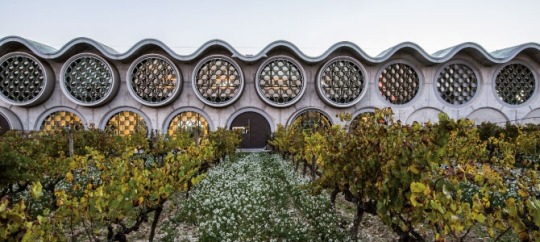
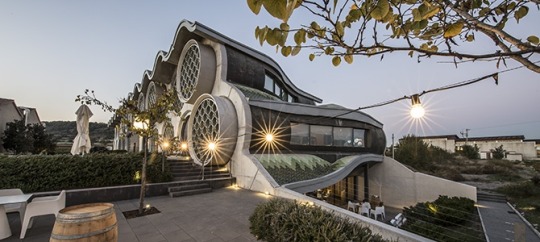

The Mastinell winery (photos 2, 3 and 4) has a hotel where each room is located like a wine bottle stacked up for fermentation (photo 1).
This luxury hotel is located among the vineyards in Penedès, an area of Catalonia known around the world for its protected denomination of origin wine and cava (sparkling wine). The hotel is connected to the winery and focuses on offering plenty of activities related to enotourism (tourism about wine) and 5-star food based on local seasonal products.
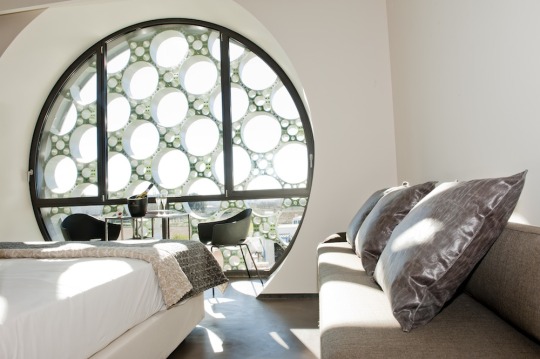
The building was designed by the architect Josep Lluís Juanpere and Escamis (GCA Arquitectes) who won the Gold Medal in the 2011 Shanghai International Interior Design Festival. It's a sustainable building with cross ventilation, which reuses rainwater and creates its energy with a biomass boiler.
Photo sources: Shutterstock, Sobremesa, and Catalan wine in a nutshell!.
#vilafranca del penedès#catalunya#arquitectura#wine#enotourism#enology#winery#travel#architecture#modern architecture#boutique hotel#hotel#luxury#penedès#exteriors#interior#interiors#adventure#sustainability#sustainable architecture
71 notes
·
View notes
Text
genpadalecki: kicking our green game up a notch with a few of our fav eco-conscious footwear brands.
tread lightly, towwnies! share your favorite sustainable shoes in the comments below.
@fredasalvador - handcrafted in family-run factories in spain & el salvador, these designer shoes are responsibly sourced using high-quality leathers, ensuring longevity while minimizing environmental impact.
@rothys - this bestselling brand embodies sustainability through circularity, utilizing twice-recycled materials in its innovative shoes. 179+ million single-use plastic bottles have been repurposed into thread.
@vivaia - crafted from recycled materials, including plastic bottles & post-consumer waste, these circular shoes are made with innovative 3D knitting technology to ensure a perfect fit + minimize excess production.
@pangaia - sourced from Italian vineyards & manufactured in portugal, this stylish & science-back brand repurposes grape byproducts from winemaking that typically go to waste, and the raw materials are transformed into chic sneaks.
@veja - designed in paris/made in brazil, the brand uses natural materials like organic cotton, sugar cane, rice waste & more, working directly with farmers in pre-production to ensure equitable practices.

10 notes
·
View notes